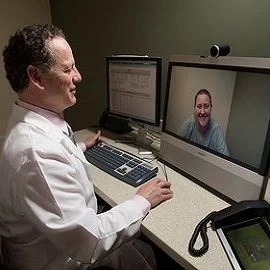A new report from Accenture suggests that use of virtual health technology can lead to annual savings of $10 billion in primary care costs, as well as allow treatment of more patients without the need to train more doctors.
While technology has greatly improved productivity rates for many industries, healthcare has made no such strides in two decades, the report notes. Healthcare is still a labour intensive industry — ie, wages account for more than half of all healthcare spending in the U.S. Moreover, looming clinician shortages compound clinician cost challenges.
The report says the industry as a whole, as well as individual organisations, should integrate virtual health solutions into their clinical practice. Virtual health tools such as biometric devices and patient portals could help streamline work and redirect clinician time to high-value tasks. The report's authors point out three ways in which this could happen:
Accenture analysis shows that by using technology to collect patient information and consider treatment options prior to a patient visit, five minutes per encounter could be saved. This is a time savings worth $7 billion in estimated economic value annually across the U.S. health system, and could "free up" the equivalent of 37,000 primary care physicians (PCPs) without the need to train or hire more doctors.
Virtual health solutions also offer the potential to help patients manage their own chronic conditions such as diabetes or hypertension outside of the annual physical examination. For example, a care model of an annual physician exam and technology-enabled self-management the rest of the year can save time equivalent to approximately 24,000 PCPs — about 11 percent of the workforce — for a value of almost $2 billion annually.
Virtual health can make a real difference across many common primary care scenarios, but not at the exclusion of in-person care. "The gold standard of care will be the best combination of in-person and virtual health approaches that support sound clinical practice, continuity of care and episodic clinical needs as well as ongoing care for those with chronic conditions," the authors write.
Source: Accenture
Image credit: Flickr.com
While technology has greatly improved productivity rates for many industries, healthcare has made no such strides in two decades, the report notes. Healthcare is still a labour intensive industry — ie, wages account for more than half of all healthcare spending in the U.S. Moreover, looming clinician shortages compound clinician cost challenges.
The report says the industry as a whole, as well as individual organisations, should integrate virtual health solutions into their clinical practice. Virtual health tools such as biometric devices and patient portals could help streamline work and redirect clinician time to high-value tasks. The report's authors point out three ways in which this could happen:
- By shifting tasks to patients
- By replacing labour with technology
- By automating tasks
Accenture analysis shows that by using technology to collect patient information and consider treatment options prior to a patient visit, five minutes per encounter could be saved. This is a time savings worth $7 billion in estimated economic value annually across the U.S. health system, and could "free up" the equivalent of 37,000 primary care physicians (PCPs) without the need to train or hire more doctors.
Virtual health solutions also offer the potential to help patients manage their own chronic conditions such as diabetes or hypertension outside of the annual physical examination. For example, a care model of an annual physician exam and technology-enabled self-management the rest of the year can save time equivalent to approximately 24,000 PCPs — about 11 percent of the workforce — for a value of almost $2 billion annually.
Virtual health can make a real difference across many common primary care scenarios, but not at the exclusion of in-person care. "The gold standard of care will be the best combination of in-person and virtual health approaches that support sound clinical practice, continuity of care and episodic clinical needs as well as ongoing care for those with chronic conditions," the authors write.
Source: Accenture
Image credit: Flickr.com
Latest Articles
healthmanagement, virtual health, cost savings, virtual visits, technology, chronic diseases
A new report from Accenture suggests that use of virtual health technology can lead to annual savings of $10 billion in primary care costs, as well as allow treatment of more patients without the need to train more doctors.










